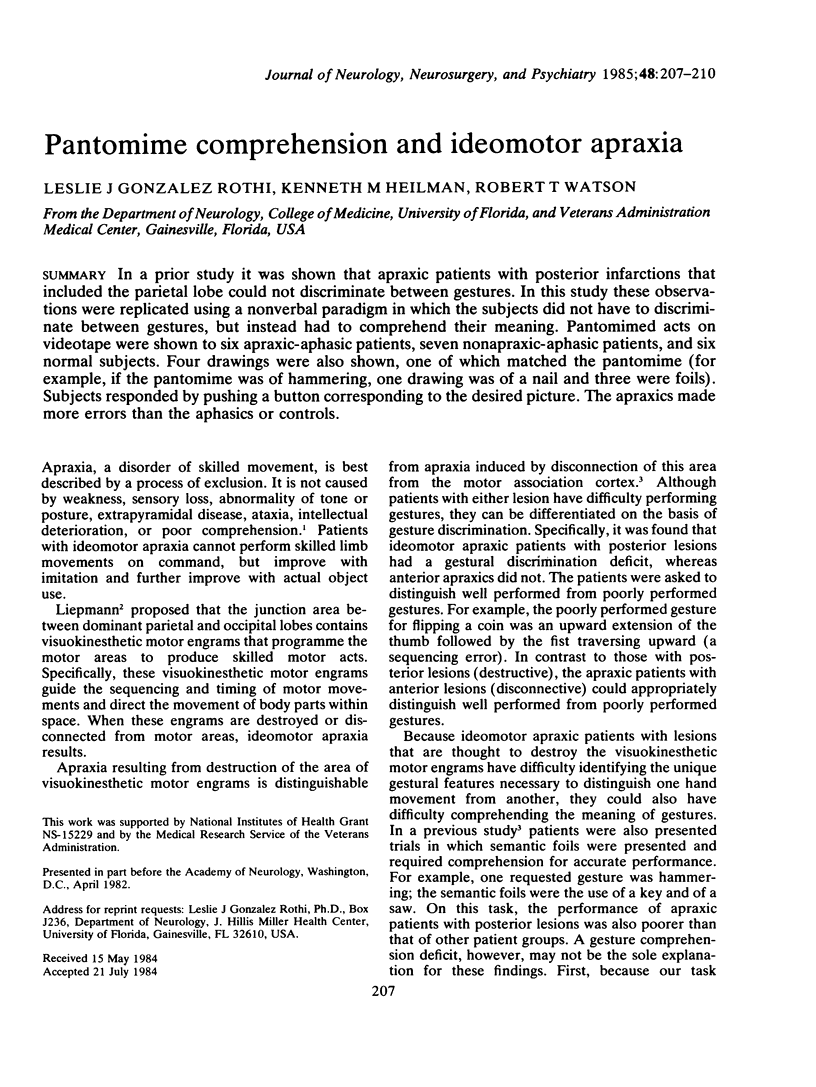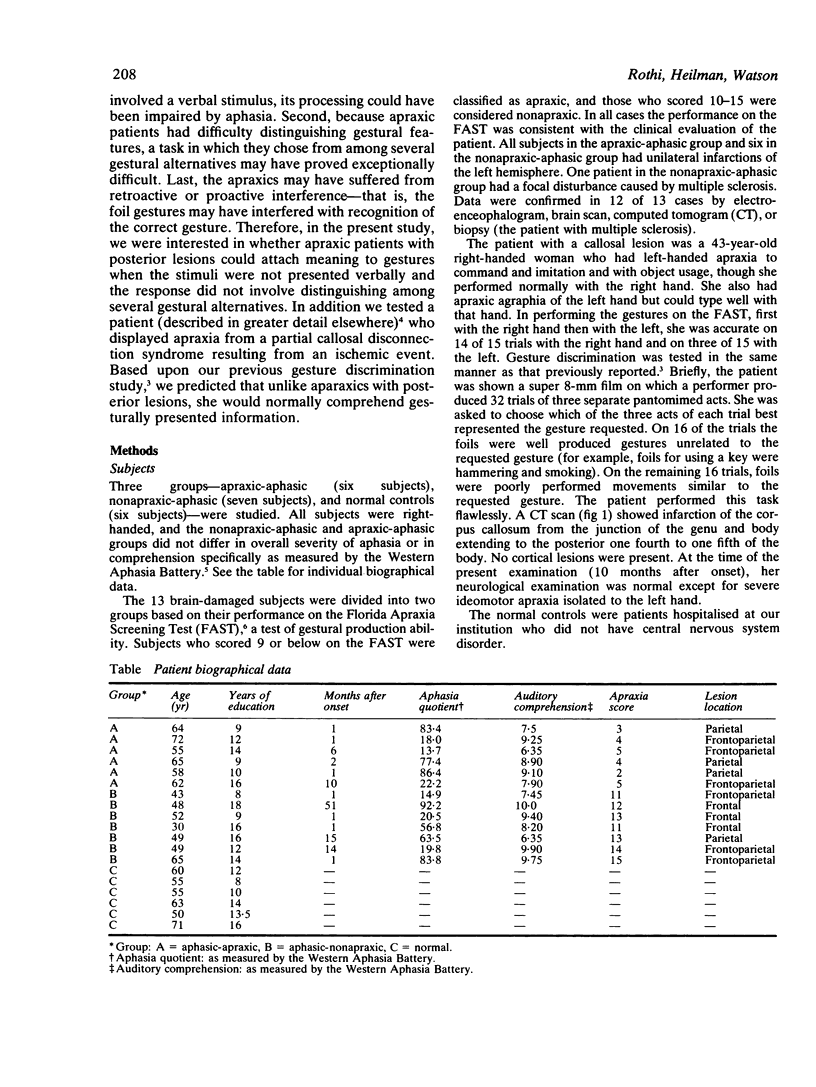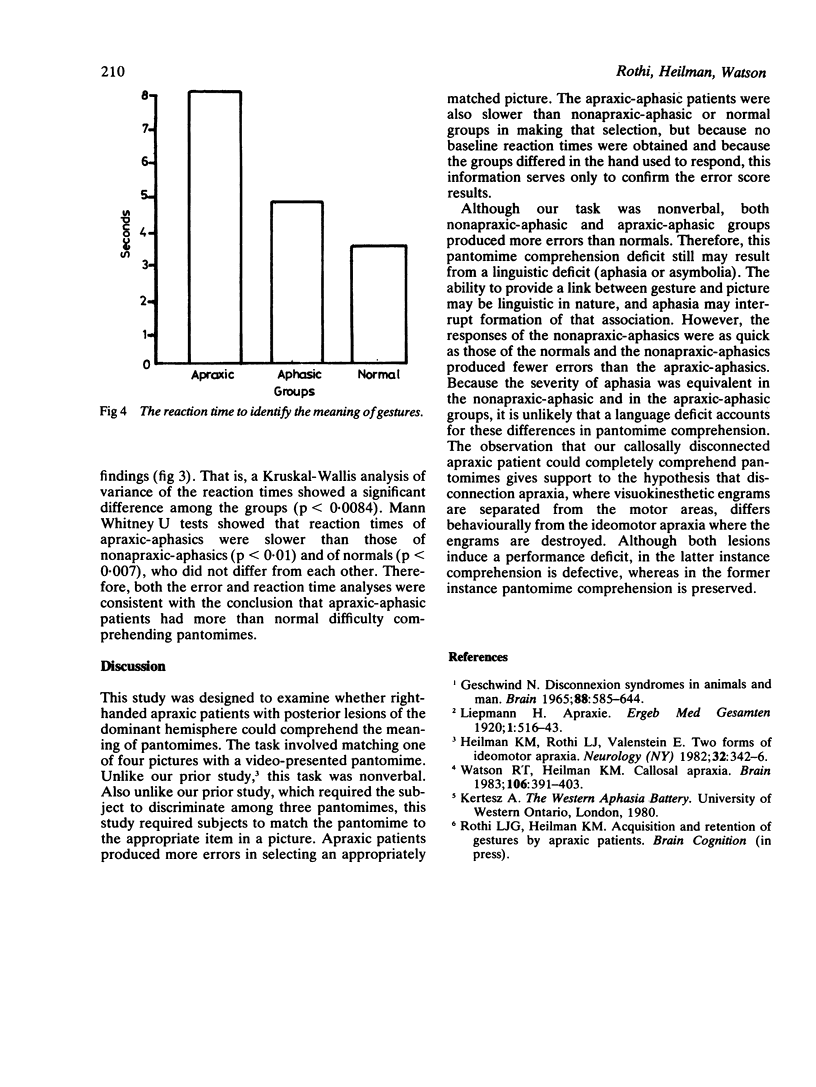Abstract
In a prior study it was shown that apraxic patients with posterior infarctions that included the parietal lobe could not discriminate between gestures. In this study these observations were replicated using a nonverbal paradigm in which the subjects did not have to discriminate between gestures, but instead had to comprehend their meaning. Pantomimed acts on videotape were shown to six apraxic-aphasic patients, seven nonapraxic-aphasic patients, and six normal subjects. Four drawings were also shown, one of which matched the pantomime (for example, if the pantomime was of hammering, one drawing was of a nail and three were foils). Subjects responded by pushing a button corresponding to the desired picture. The apraxics made more errors than the aphasics or controls.
Full text
PDF



Images in this article
Selected References
These references are in PubMed. This may not be the complete list of references from this article.
- Geschwind N. Disconnexion syndromes in animals and man. II. Brain. 1965 Sep;88(3):585–644. doi: 10.1093/brain/88.3.585. [DOI] [PubMed] [Google Scholar]
- Heilman K. M., Rothi L. J., Valenstein E. Two forms of ideomotor apraxia. Neurology. 1982 Apr;32(4):342–346. doi: 10.1212/wnl.32.4.342. [DOI] [PubMed] [Google Scholar]
- Watson R. T., Heilman K. M. Callosal apraxia. Brain. 1983 Jun;106(Pt 2):391–403. doi: 10.1093/brain/106.2.391. [DOI] [PubMed] [Google Scholar]



